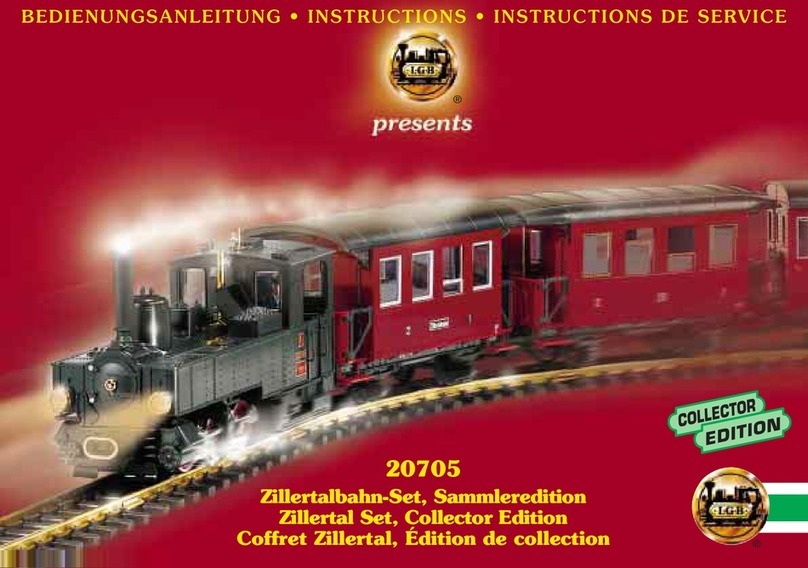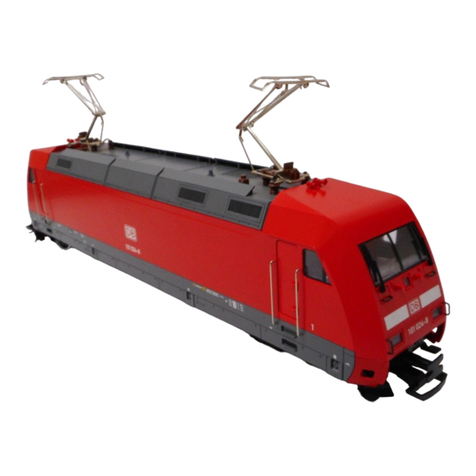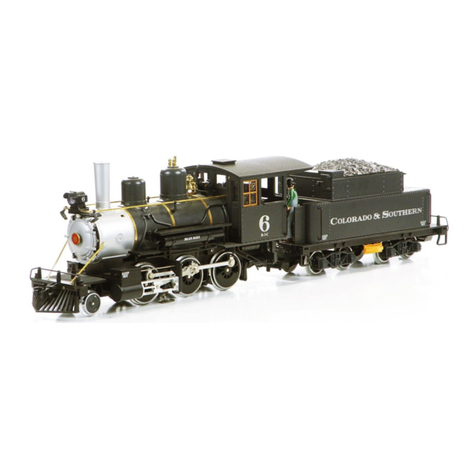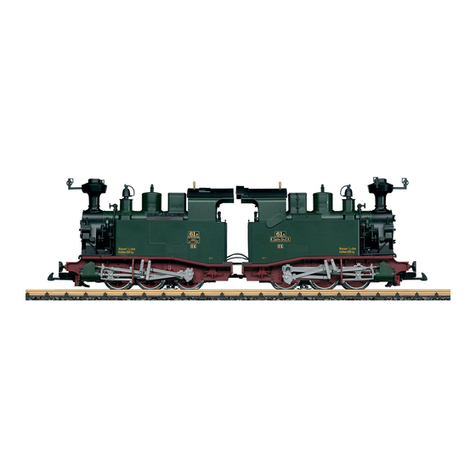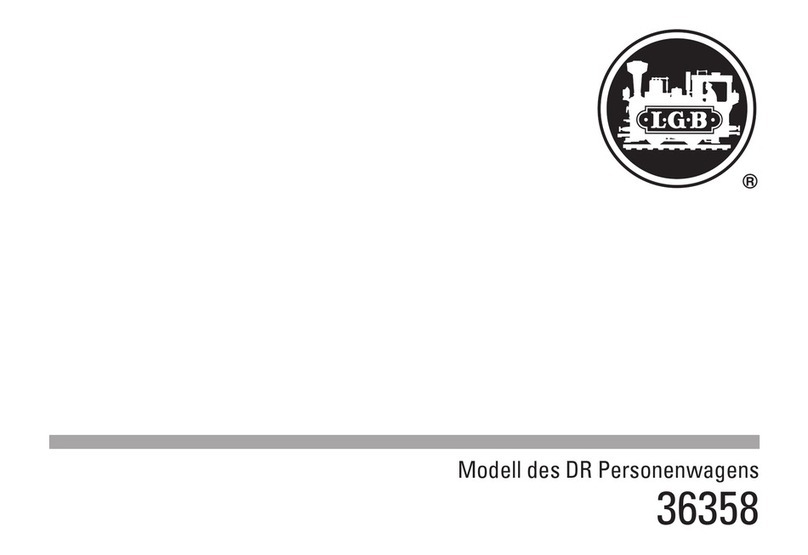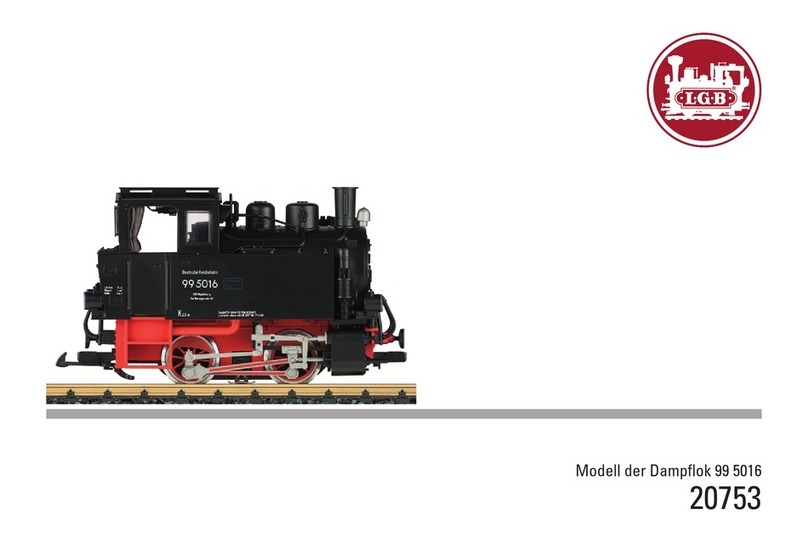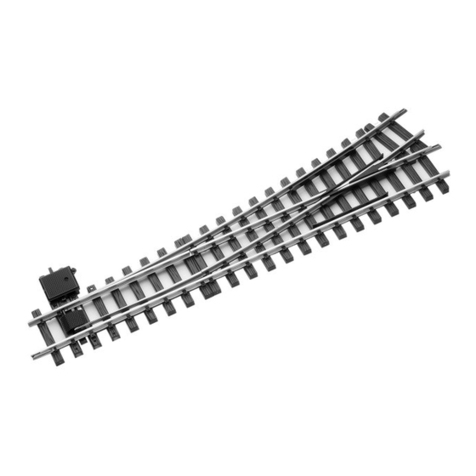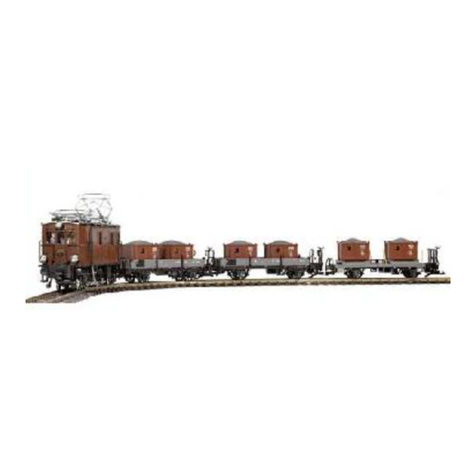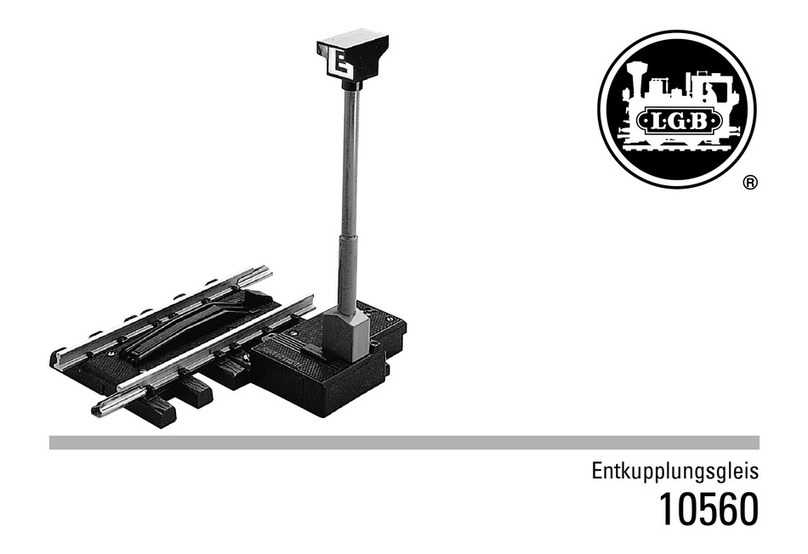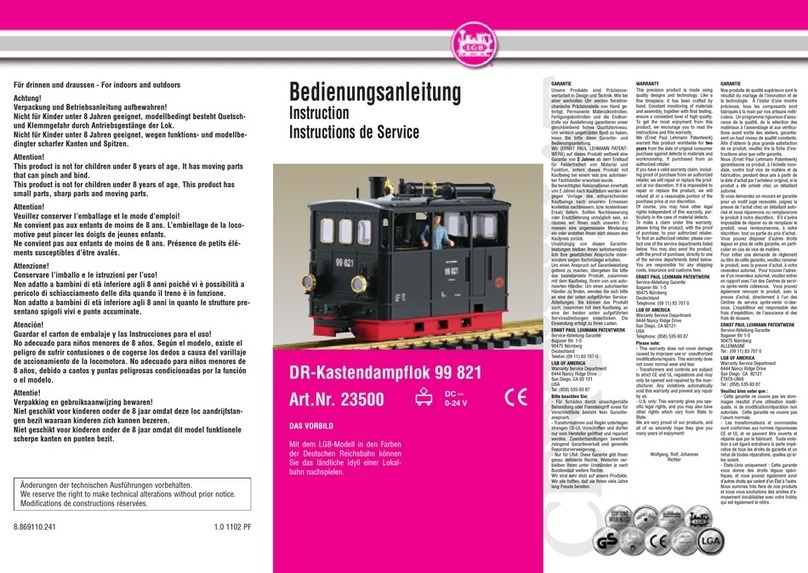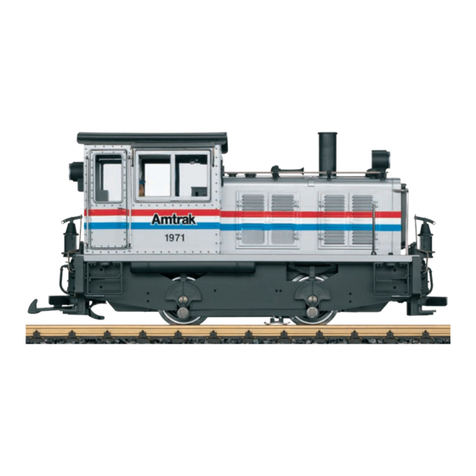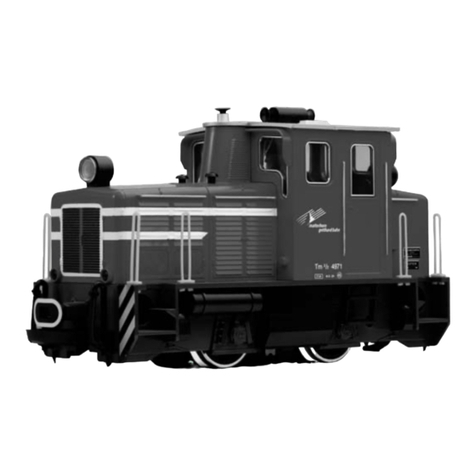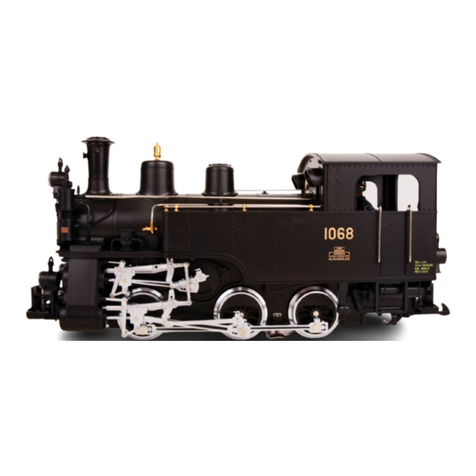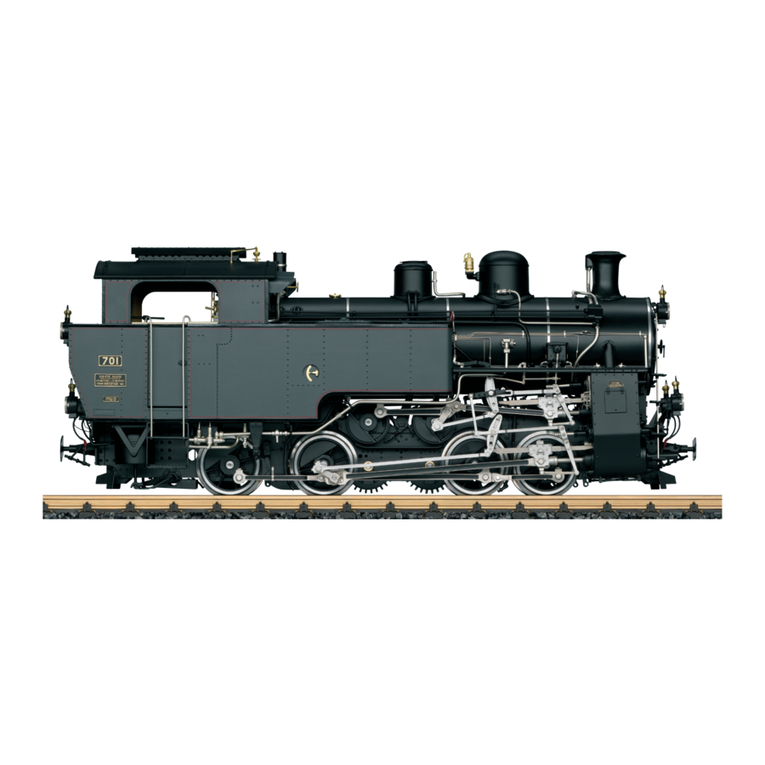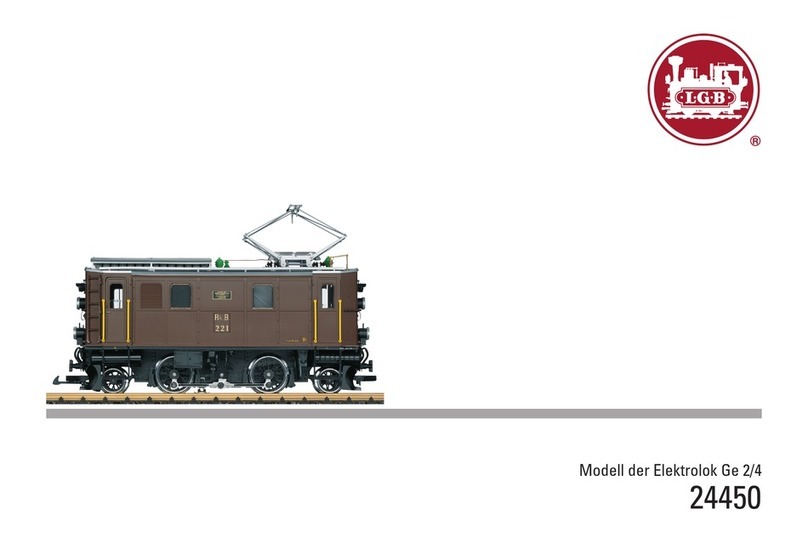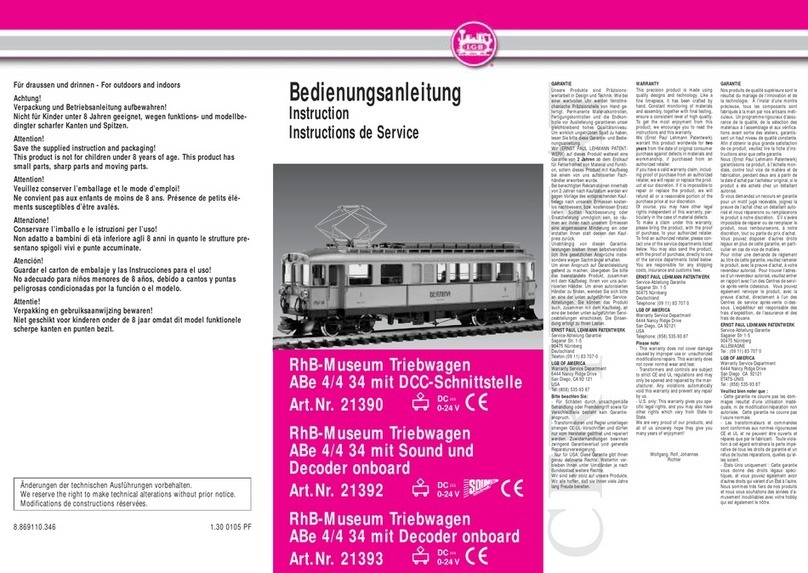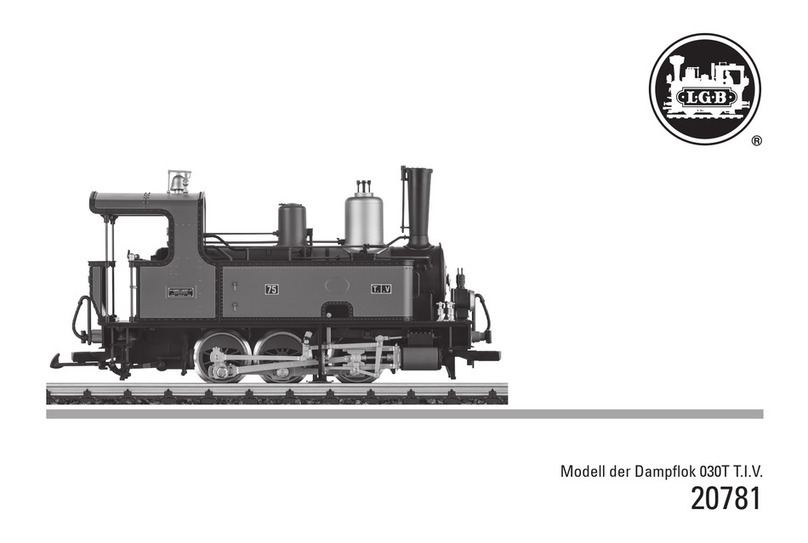
21701
The
Prototype:
In
1899, the locomotive maker
Krauss of Linz, Austria delivered
one of its famous Useries steam
locomotives, No. 4182, to the
Friedlander Regional Railway
(FBB), which was then located
in
the Austrian-German border area.
It
operated
as
FBB 1»Ehrlich«.
In
1918, the locomotivebecame CSD
U37007 of the Czechoslovakian
National Railway. Around 1939,
the locomotive became the Deut-
sche Reichsbahn's No. 99791 and
was deployed on the Hetzdorf-
Grosswaltersdorf narrow gauge
line.
The loco was damaged during
an
air raid, and
in
1945, itwastaken
in
1945 to the
DR
repair shop
in
Chemnitz. From there it was used
by the Prignitz regional narrow
gauge railway. After expropriation
of the private railways
in
East
Germany, it was renamed to
DR 994712, and finally, it was
taken out of service
on
November
15, 1965. That ended the memora-
ble history of this famous Austrian
locomotive
in
Germany.
Technical
Features:
-Smoke generator
-Automatic directional lighting
-Twin front and rear lanterns
-Lighted cab
-Electronic voltage stabilization
circuit
-Three-way control switch
in
cab
-Rear lighting socket
-Traction tyre
-Furnished cab with instrument
panel and engineer
-Prototypical livery and lettering
-Detailed, operating driving gear
with four powered wheels
-Opening fire box door with de-
tailed boiler pipes
-Metal plated lantern rings, bell,
whistle and driving rods
Drive unit with seven-pole
BOhler motorsheltered from dust
and dirt.
Illumination:
At the front are two working lan-
terns. These lanterns automati-
cally turn off when the locomotive
is run
in
reverse. Nowtwo rear lan-
terns are illuminated. To change
the bulbs, the lamp rings and glas-
ses should be removed. The blown
bulb can be removed either with
the fingers or with apair ot tweez-
ers. The driver's cab bulb can be
removed by pushing apair of
tweezers through the driver's cab
door. An electronic voltage
stabilizer circuit helps to keep a
steady light in the lanterns from
very low speeds to high speeds.
Lighting sockets are mounted at
the rear of the driver's cab. These
socketscan be used to power LGB
electrical accessories such as the
"Sound of Steam" Boxcar LGB
No. 41351 or Interior Lighting Sets
LGB No. 68330 (3030).
Drive
Mechanism:
This model
is
powered byaseven-
pole
BOhler
motor. Three axles are
powered. One wheel
is
equipped
with atraction tyre.
Smoke
Generator:
Enclosed with the locomotive
is
a
small supply of smoke fluid, which
allows you to run your locomotive
with "steam". The smokestack
should only be filled halfway with
smoke fluid. This allows the smoke
generator to develop sufficient
heat to evaporate the smoke fluid.
The smoke
is
harmless and safe.
The smokestack can be easily re-
filled with the LGB Smoke Fluid
(Nr. 50010). Because of the vol-
tage stabilizer, running your en-
gine without smoke fluid will not
damage the smoke generator.
Attention:
Do
not touch the fire
tube as it can be broken very eas-
ily.
Replacing
of
a
defective
smoke
generator:
To change the smoke generator,
carefully lift out the safety cover of
the smoke stack with asmall lever
to avoid damage. After that, the
smoke generator should be pulled
out carefully with needle-nosed
pliers by grasping the center heat-
ing pipe.
The wires to the old generator
should be cut and reconnected to
the replacementgeneratoraccord-
ing to illustration
4.
Do
notforget td
replace the safety cover.
Methods
of
operation:
You can choose how to operate
yourengine by using thethree-way
switch in the engineer's cab:
1
l
Switch position 0=All power off
Switch position 1=
Powerto lights and
smoke generatoronly
Switch position 2=
Powerto lights, smoke
generatorand motor
Cleaning:
Dirty locomotives can be cleaned
using detergent and water.
Lubrication:
The axles should be occasionally
lubricated from with adrop of LGB
Maintenance Oil (Nr. 51021). No
other lubrication
is
necessary.
Motor
replacement:
This should only be carried outin a
specialist workshop. Should you
however decide to do this, natur-
ally at your own risk, you should
take care to ensure that when the
connecting rods are replaced onto
the wheel pivots thatthe wheels do
not jam when rotated. Badly fitted
connecting rods lead to unsatisfac-
tory locomotive driving charac-
teristics and can also lead to pre-
mature gearbox faults.
Should the motorand/or warm and
spur gears be replaced the these
should be subsequently greased
with LGB-Gearbox grease 51020.
Replacing
the
wheel sets,
power
pick-Up
shoes
and
commutator
brushes
(Fig. 5):
The chassis bottom can be lifted
off after removing five screws.
After unscrewing the coupling
shaft screws, the wheel sets,
power pick-up shoes and com-
mutator brushes can be replaced.
When the wheels are replaced, the
gears and axle bearings must be
adequately lubricated with LGB
Graphite Lubricant (51020).
During assembly when the cou-
pling rod is screwed into the
pivot, it is vitally important to
make sure that the coupling rod
does notclamp atanywheel pos-
ition. Thiswould otherwiseinevit-
ably cause poor driving quality
and may evendestroythe gear.
Engine
weight:
2480 grams
Length
over
buffers:
340mm
Power
supply:
LGB locomotivesshouldonly be op-
erated with LGB transformers and
power packs. For this model,
we
recommend
an
LGB power supply
with poweroutput of 1amp or
more,
for example, the 50000 power pack
orthe 50060transformer
and
50070
speed control combination. Use the
LGB JUMBO power pack (50100/
50101) for best performance.
This one however, must not be
used outdoors.
Replacment
parts:
65853 (208513) Smoke stack
insert
62201 (2201) Motor
68511 (5051/1) Lightbulbs
63120 (2120) Commutator
brushes
63218 (2218) Pick up shoes
69104 (2010/4) Traction tyres
51020 (5102) LGB Graphite
Lubricant
51021 (510211) LGBMain-
tenanceOil
50010 (5001) LGB Smoke and
Cleaning Fluid
50020 (5002) LGB Special
ToolSet






